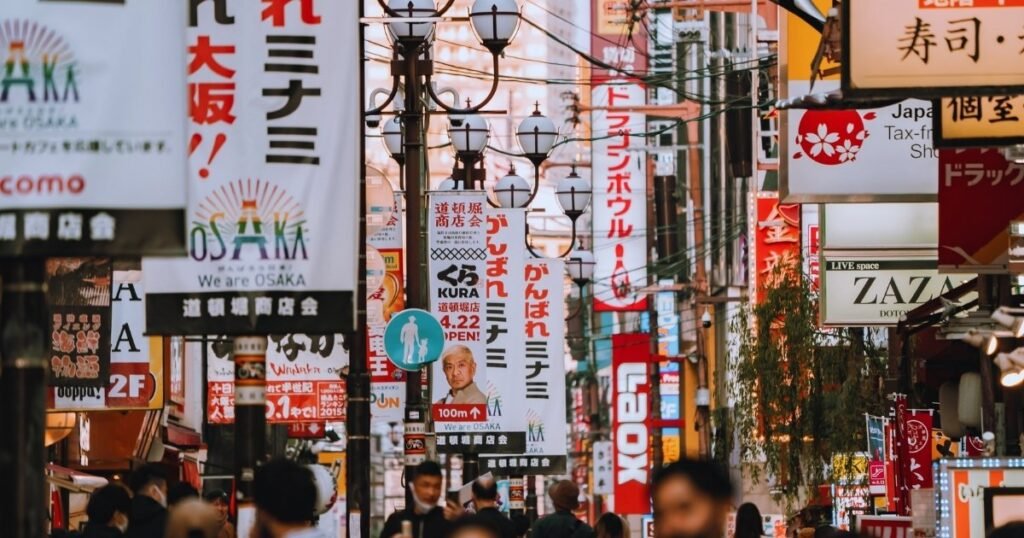From neon-lit streets bustling with energy to tranquil tea ceremonies steeped in tradition, daily life in Japan offers a fascinating blend of the modern and the cultural. Whether you’re a travel enthusiast, aspiring expat, or someone enchanted by Japanese culture, understanding what daily life in Japan truly looks like can help deepen your appreciation or prepare you for an unforgettable experience.
This blog will unravel the different aspects of life in Japan—from work culture and education to dining and transportation. Plus, there’s a handy data table and an FAQ section to answer your burning questions.
Table of Contents
Work Culture in Japan
Dedication to Work
Japan’s work culture is famously intense—marked by long hours and a strong sense of dedication. The concept of “karoshi” (death from overwork) has even emerged as a societal issue, highlighting the country’s deep emphasis on responsibility and commitment.
However, efforts to improve work-life balance have been implemented recently, including shorter working hours and programs encouraging employees to take vacations.
Typical Working Day
- Start Time: 8–9 AM
- Lunch Break: 12–1 PM (often a quick bento or ramen)
- End Time: 5–7 PM, though overtime is common.
The Rise of Remote Work
Recently, particularly post-COVID, remote work has started gaining traction in Japan. This cultural shift has allowed workers to balance professional commitments with personal life more effectively.
Education and School Life
Education plays a central role in Japan, with a heavy focus on discipline, teamwork, and respect for authority.
A Day in the Life of a Japanese Student
- Morning Routine: Students often clean classrooms before their first session—a reflection of Japan’s values of responsibility and cleanliness.
- Uniforms: Most schools require uniforms, creating a sense of community.
- Extracurricular Activities: From traditional calligraphy (shodō) to sports, after-school activities are vital.
Japanese students attend school 240 days a year, which is longer compared to the 180 days in the U.S. This emphasis on education underlines the nation’s focus on excellence.
Dining in Japan
What’s on the Table?
Japanese cuisine is celebrated globally, and for good reason. Daily meals are a balanced mix of rice, fish, vegetables, and fermented foods like miso.
- Breakfast: Rice, miso soup, grilled fish, and pickled vegetables.
- Lunch: Bento boxes are common—think neatly arranged portions of rice, meat, and vegetables.
- Dinner: Often a family affair, with dishes like sushi, tempura, or hot pot (nabe).
Eating Out
For a casual dining experience, ramen shops and izakayas (Japanese pubs) are popular. Whether it’s conveyor-belt sushi or a fine kaiseki meal, there’s something for every palate.
Pro Tip: Don’t tip your waiter—leaving extra money may be seen as rude.
Transportation in Japan
Japan’s transportation system is a marvel of efficiency, with trains playing a central role in daily life.
Public Transportation
- Trains (Shinkansen): The bullet train connects cities at speeds of up to 320 km/h.
- Subways: Perfect for navigating big cities like Tokyo and Osaka.
- Buses: Often used for areas with less train coverage.
Bicycle Culture
Cycling is a daily mode of transport for many Japanese residents, particularly in smaller towns and residential areas.
Etiquette on Public Transit
- Silence is golden—public transport is considered a space of quiet.
- Text, don’t call—talking on phones inside trains is frowned upon.
| Transportation Mode | Cost (Approx.) | Best For |
|---|---|---|
| Subway/Train | ¥200–¥400/trip | City travel |
| Shinkansen | ¥8,000–¥16,000 | Long-distance, intercity travel |
| Bus | ¥200/trip | Areas without train access |
| Bullet Pass (JR Rail) | ¥29,650 (7-day) | Unlimited travel across Japan |
The Japanese Way of Life
Harmony with Nature
Despite urbanization, Japan maintains a deep connection with nature. Seasonal festivals (like cherry blossom viewings) and gardens like Kenroku-en reflect this harmony.
Neighborhoods and Community
Respect for neighbors and orderliness is expected in Japanese communities. Sorting your trash for recycling correctly is not a suggestion but a must.
Convenience and Safety
- Convenience Stores: Called “konbini,” these stores (like 7-Eleven) sell everything from sushi to stationery, 24/7.
- Safety: Crime rates are among the lowest worldwide, making Japan an incredibly secure place to live or visit.
FAQs about Daily Life in Japan
What is the cost of living in Japan?
The cost varies depending on the area. Urban hubs like Tokyo are expensive, with rent averaging ¥150,000 ($1,375 USD) per month, while rural areas can be much cheaper.
What’s the etiquette for visiting someone’s home?
Always remove your shoes before stepping inside. Many homes provide a pair of slippers to wear indoors.
Is learning Japanese necessary for daily life?
While basic Japanese helps a lot, many urban areas have English signage, and younger locals often speak some English.
Are there cultural differences travelers should be aware of?
Yes! Bowing is a common greeting, and giving or receiving items with both hands is considered polite.
Key Takeaways for Japan Lovers
Daily life in Japan offers a unique blend of traditional values and modern innovation. From the serene simplicity of a tea ceremony to the hustle and bustle of Tokyo streets, every moment captures a new facet of Japanese culture.
Exploring these aspects not only broadens your perspective but also enriches your travel or living experience. Whether you’re visiting Japan for the first time or planning to move, seize every opportunity to connect with its people, culture, and lifestyle.

